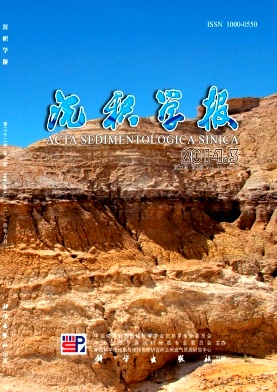Genesis of Dolomitic Rock within the Lower Cretaceous Lacustrine Facies in Bayindulan Sag,Erlian Basin
- Received Date: 2013-10-12
- Rev Recd Date: 2013-12-18
- Publish Date: 2014-06-10
-
Key words:
- dolomitic rock /
- tuffaceous composition /
- buried dolomitization /
- the Lower Cretaceous /
- Bayindulan sag /
- Erlian Basin
Abstract: The dolomite rocks of the Lower Cretaceous are formed under special geologic conditions, and are the key horizon that can be correlated with the whole basin. In recent years, abundant hydrocarbon shows have been found in the dolomitic rocks, but there is little research on the dolomitization of this deposit. The genesis of dolomite in the study area is related to hydrolysis of volcanic material. Bulk rock and microscopic petrologic features analysis indicate that the specific suite of rocks is rich in volcanic ash which contains a large amount of Ca2+ and Mg2+. Dolomites, which originated from the reaction of CO2, Ca2+ and Mg2+, replace volcanic material to fill pores and fractures. Crystal structures of dolomite observed under microscope, can be classified as porphyritic crystal, micritic crystal and fine-powder crystal. Dolomite with porphyritic crystal behaves dispersire state and shows irregular shape. Additionally, the size of porphyritic crystal is relatively large, with an average diameter of about 0.2mm. Dolomite with micritic crystal is characterized of laminated and agglomerate feature. The difference between porphyritic and micritic structure is related to the liquidity of pore fluids. Dolomites with fine-powder crystal concentrate in reservoir pores or fractures as cement. The problem about origin of the CO2 is as important as that of Mg2+ to the specific dolomitization. Analysis of carbon isotope show that CO2 used to hydrolysis is related to the methanation of organic matters. The carbons within original organic material are transformed to methane and bicarbonate by methanation in the absence of oxygen. The enrichment of 12C in methane results in the concentration of 13C in bicarbonate and a slightly positive of δ13C in dolomite.
| Citation: | Genesis of Dolomitic Rock within the Lower Cretaceous Lacustrine Facies in Bayindulan Sag,Erlian Basin[J]. Acta Sedimentologica Sinica, 2014, 32(3): 560-567. |






 DownLoad:
DownLoad: